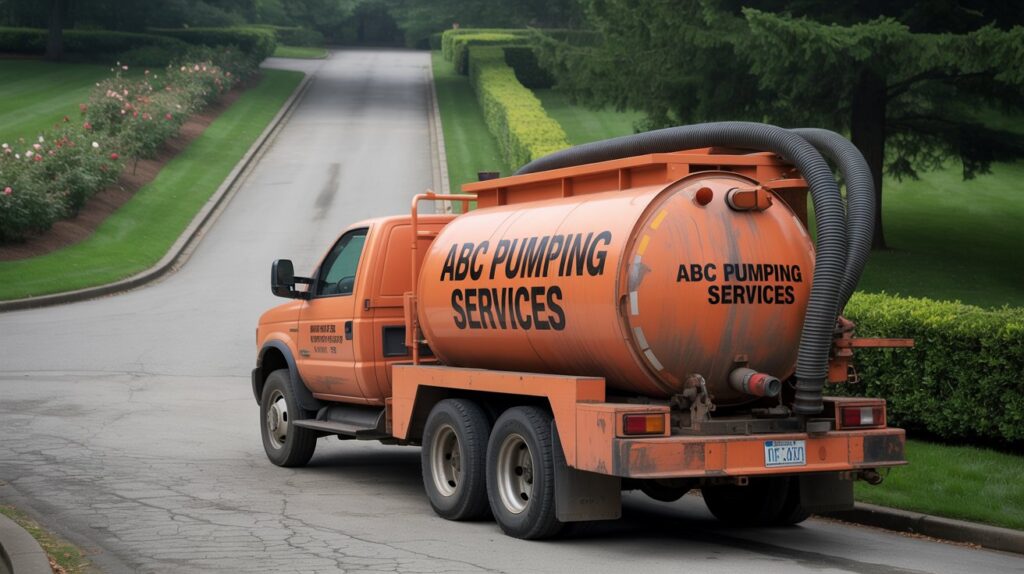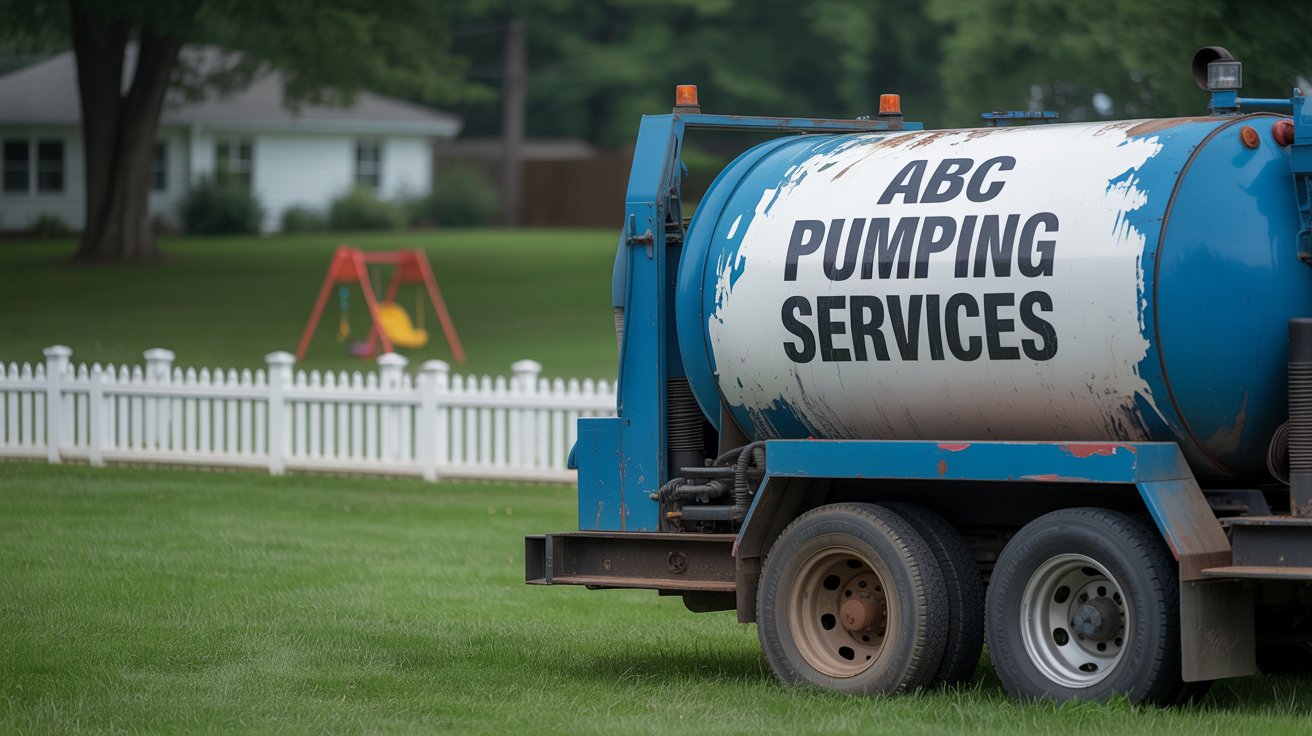Are you aware of the importance of regular septic tank maintenance for your home? Neglecting this crucial task can lead to unpleasant odors, toilet troubles, and even costly repairs.
Understanding the basics of septic system care is key to maintaining a functional and efficient system. In this comprehensive guide, we will walk you through the essentials of septic tank pumping, including its importance and the process involved.
By following this guide, homeowners can ensure their septic systems operate smoothly and efficiently, avoiding potential health hazards. Whether you’re a new homeowner or have been maintaining your septic system for years, this guide is designed to provide you with the essential information you need.
Key Takeaways
- Understand the importance of regular septic tank pumping
- Learn the process involved in septic tank pumping
- Discover how to maintain your septic system effectively
- Identify potential health hazards associated with poor septic maintenance
- Find out how to ensure your septic system operates smoothly and efficiently
Understanding Your Septic System
Septic systems are complex, and knowing how they work is essential for maintenance. A typical septic system consists of a septic tank and a drain field, working together to treat wastewater.
How Septic Systems Work
The septic tank is a buried, water-tight container that holds wastewater long enough for solids to settle to the bottom and oils and greases to float to the top. This process is facilitated by bacteria that break down the organic matter.
Components of a Typical Septic System
The septic tank and drain field are the primary components. The tank is where initial treatment occurs, while the drain field disperses the treated wastewater into the soil.
The Tank
The septic tank is designed to allow solids to settle and be broken down by bacteria. Regular septic tank pumping services are necessary to remove accumulated sludge.
The Drain Field
The drain field, or leach field, is where treated wastewater is dispersed into the soil. Proper maintenance ensures it functions correctly.
The Role of Bacteria in Your Septic System
Bacteria play a crucial role in breaking down organic matter in the septic tank. Understanding their role can help you maintain a healthy system and determine how often to pump septic tank.
| Component | Function |
|---|---|
| Septic Tank | Holds wastewater, allowing solids to settle and be broken down by bacteria |
| Drain Field | Disperses treated wastewater into the soil |
Why Septic Tank Pumping Is Essential
Understanding the importance of septic tank pumping can save homeowners from costly repairs and environmental hazards. Regular septic tank pumping is necessary to remove accumulated sludge and scum from the tank, preventing system failures and costly repairs.
Preventing System Failures and Costly Repairs
Failing to pump your septic tank regularly can lead to system failures, which are not only expensive to repair but also pose significant environmental and health risks. Some of the consequences include:
- Sewage backups into your home or yard
- Contamination of groundwater and surface water
- Damage to your property and neighboring properties
Protecting Your Property Value
A well-maintained septic system is crucial for protecting your property value. Neglecting septic tank pumping can lead to unpleasant odors, unsightly sewage backups, and other issues that can decrease your property’s value.
Environmental and Health Considerations
Septic tank pumping is also essential for environmental and health reasons. Untreated sewage can contaminate water sources, posing health risks to humans and wildlife. Regular pumping helps prevent these issues.
By understanding why septic tanks need to be pumped and adhering to a regular septic tank pumping frequency, homeowners can avoid these problems and ensure their septic system operates efficiently.
Signs Your Septic Tank Needs Pumping
A well-functioning septic system is vital for your home’s health, and knowing the signs that your septic tank needs pumping can save you from costly repairs. Your septic tank plays a crucial role in treating wastewater, and neglecting its maintenance can lead to serious issues.
Slow Drains and Toilets
If you notice that your sinks, toilets, or showers are draining slower than usual, it could be a sign that your septic tank is full and needs pumping. Slow drains are often one of the first indicators of a problem.
Foul Odors Around Your Property
Unpleasant odors around your home, particularly near the drain field or septic tank, can indicate that your septic system is not functioning properly. These foul odors can be a sign that wastewater is not being treated effectively.
Sewage Backups
One of the most alarming signs is sewage backing up into your home or yard. This is a clear indication that your septic tank is overloaded and needs immediate pumping.
Unusually Lush Grass Over the Drain Field
If you notice that the grass over your drain field is unusually lush and green, it could be a sign that your septic tank is leaking nutrients into the soil.
Water Pooling in Your Yard
Water pooling or standing water in your yard, especially near the drain field, can indicate that your septic system is failing and needs attention.
Being aware of these signs can help you determine if your septic tank needs to be pumped, ensuring your system operates efficiently and effectively.
How Often Should You Pump Your Septic Tank?
The need for septic tank pumping is not a one-size-fits-all solution; it depends on various household and system characteristics. Understanding these factors is crucial for maintaining a healthy and efficient septic system.
Factors Affecting Pumping Frequency
Several factors influence how often you should pump your septic tank. These include:
Household Size
Larger households generate more wastewater, putting additional strain on the septic system. As a result, households with more occupants may need to pump their tanks more frequently.
Tank Size
The size of your septic tank also plays a significant role. Larger tanks can handle more wastewater and may not need to be pumped as often as smaller tanks.
Water Usage Patterns
Households with high water usage, due to factors like large families or frequent guest visits, may require more frequent pumping to prevent system overload.
General Guidelines Based on Home Size
While specific pumping frequencies depend on individual circumstances, general guidelines can be applied based on home size. The following table provides a summary:
| Household Size | Tank Size (Gallons) | Pumping Frequency (Years) |
|---|---|---|
| 1-3 people | 750-1000 | 5-7 |
| 4-6 people | 1000-1250 | 3-5 |
| 7 or more people | 1250 or more | 2-3 |
Creating a Maintenance Schedule
To ensure your septic system operates efficiently, create a maintenance schedule that includes regular inspections and pumping as needed. Consider factors like how much does septic tank pumping cost when planning your budget for septic maintenance. Regular septic tank pumping out is essential for preventing system failures.

How Septic Tank Pumping Works
Septic tank pumping involves a series of steps that ensure the effective removal of waste from your septic system. This process is crucial for maintaining a healthy and functional septic tank.
Preparation Steps Before the Service
Before the septic tank pumping service arrives, it’s essential to prepare your tank. This includes:
- Locating the septic tank and ensuring it’s accessible
- Noting any recent additions to your household or changes in water usage
- Informing the service provider about any concerns or issues you’ve noticed
The Pumping Process Explained
The actual pumping process involves using a vacuum truck to remove the accumulated sludge and scum from the septic tank. The service technician will:
- Inspect the tank to determine the extent of the pumping required
- Use the vacuum truck to remove the waste
- Dispose of the waste properly at a designated facility
Inspection Procedures During Pumping
During the pumping process, the technician will also inspect the tank and its components for any signs of damage or wear. This includes checking the:
- Inlet and outlet pipes for blockages or damage
- Tank itself for cracks or leaks
- Baffles or tees for proper function
How Long Does Pumping Take?
The duration of the pumping process can vary depending on the size of the tank and the amount of waste to be removed. On average, it can take anywhere from 30 minutes to a few hours. It’s essential to ask your service provider for an estimated time to plan accordingly.
Finding Reliable Septic Tank Pumping Services
Finding a trustworthy septic tank pumping company can be a daunting task, but it’s essential for maintaining your system’s health. When searching for a service provider, there are several factors to consider to ensure you’re hiring a reputable company.
Qualities of Reputable Companies
A reliable septic tank pumping service should have a good reputation, proper equipment, and experienced technicians. They should also be able to provide references and have a clear, transparent pricing system. As “A well-maintained septic system is key to a healthy home environment.”
Questions to Ask Before Hiring
Before hiring a septic tank pumping service, ask about their experience, licenses, and insurance. It’s also essential to inquire about their pumping process and what they look for during an inspection. You may also want to ask, “Can you pump my septic tank in winter or during rainy seasons?” Understanding their capabilities and procedures will help you make an informed decision.

Checking Licenses and Insurance
Ensure the company you hire has the necessary licenses and insurance to operate in your state and locality. This protects you and your property in case of accidents or damages during the pumping process.
Reading Reviews and Getting Recommendations
Reading online reviews and asking for recommendations from friends, family, or neighbors can provide valuable insights into a company’s reliability and quality of service. Look for companies with consistently positive feedback and a strong reputation in your community.
Septic Tank Pumping Costs Breakdown
Understanding the costs associated with septic tank pumping is crucial for homeowners who want to maintain their septic systems effectively. The cost can vary based on several factors, and being aware of these can help homeowners budget accordingly.
Average Cost Ranges Across the US
The average cost of septic tank pumping in the United States ranges from $200 to $500, depending on the size of the tank and the service provider. It’s essential to get quotes from multiple providers to compare prices.
Factors That Affect Pricing
Several factors can influence the cost of septic tank pumping. These include:
- Tank size and accessibility
- Distance from the service provider
- Condition of your system
Tank Size and Accessibility
Larger tanks or those that are harder to access may cost more to pump. Regular maintenance can help prevent issues that make your tank less accessible.
Distance from Service Provider
The farther you are from the service provider, the higher the cost due to travel fees. Local providers may offer more competitive pricing.
Condition of Your System
If your septic system is in poor condition, it may require more extensive work during pumping, increasing the cost.
| Factor | Average Cost Impact |
|---|---|
| Tank Size (1,000 gallons) | $200-$300 |
| Tank Size (1,500 gallons) | $300-$450 |
| Poor Accessibility | + $50-$100 |
| Distance (per mile) | + $1-$5 |
Additional Services Worth Considering
Some service providers may offer additional services such as inspections or maintenance checks. These can help identify potential issues before they become major problems. Homeowners should inquire about these services when getting their tank pumped.
Seasonal Considerations for Septic Tank Pumping
Understanding the seasonal implications for septic tank pumping is crucial for maintaining a healthy septic system. Homeowners should be aware that different times of the year can affect the efficiency and effectiveness of septic tank pumping.
Can Septic Tanks Be Pumped in Winter?
Pumping a septic tank in winter can be challenging due to frozen ground and potentially harsh weather conditions. However, it’s not impossible. Many professionals offer septic tank pumping services year-round, including winter. It’s essential to check if the service provider has experience working in cold conditions.
Benefits of winter pumping: Less likelihood of ground contamination due to frozen soil, potentially lower costs due to less demand.
Consideration: Ensure access to the septic tank is not hindered by snow or ice.
Pumping During Rainy Seasons
Pumping during rainy seasons can be advantageous as the moist ground can make it easier to access the septic tank. However, heavy rain can sometimes complicate the pumping process by making the area around the tank muddy and difficult to navigate.
Precautions: Ensure the pumping service has the necessary equipment to handle wet conditions and that they follow best practices to avoid environmental contamination.
Ideal Times of Year for Routine Maintenance
While septic tanks can be pumped at any time, some seasons are more favorable than others for routine maintenance. Generally, spring and fall are considered ideal times for septic tank pumping.
- Spring: After the thaw, pumping can help remove accumulated sludge and scum that may have built up over winter.
- Fall: Before the ground freezes, pumping can prepare the system for the colder months and ensure it’s functioning properly.
Regular maintenance, regardless of the season, is key to extending the life of your septic system. It’s also worth considering how long does septic tank pumping take and planning accordingly to minimize disruptions.
Understanding how long can a septic tank go without being pumped is also crucial. Factors such as household size, water usage, and the tank’s capacity play significant roles. Regular inspections can help determine the best pumping schedule for your specific situation.
Emergency Septic Tank Pumping: When to Act Fast
A septic tank emergency requires immediate attention to prevent health hazards and property damage. Understanding how to respond in such situations can save you time, money, and stress.
Recognizing True Septic Emergencies
Signs of a septic emergency include sewage backups, strong odors around your property, and water pooling in your yard. If you notice any of these symptoms, it’s crucial to act quickly.
Steps to Take During a Septic Crisis
In the event of a septic emergency, first, avoid using any water in your home to prevent further system overload. Next, contact a professional septic service immediately. They will assess the situation and provide the necessary emergency septic tank pumping.
What to Expect from Emergency Services
Emergency septic services will typically inspect your system, pump your septic tank, and identify the cause of the emergency. They may also offer advice on how to prevent future issues.
Preventing Future Emergencies
To avoid future septic emergencies, regular maintenance is key. This includes scheduling regular inspections and pumping your septic tank as needed. Being mindful of what you dispose of down your drains can also help prevent system failures.
Post-Pumping Septic Tank Care
Maintaining your septic tank after pumping is key to preventing future problems and costly repairs. Proper post-pumping care ensures the longevity and health of your septic system.
What to Expect After Your Tank Is Pumped
After your septic tank is pumped, you can expect the service provider to inspect the tank and its components. This inspection helps identify any potential issues that may need to be addressed. The service provider will also check for any signs of damage or wear on the tank and its connections.
Is Your Tank Completely Empty After Pumping?
It’s rare for a septic tank to be completely empty after pumping. Some sludge may remain at the bottom, which is normal. However, the majority of the waste should be removed. Regular pumping helps maintain the balance of bacteria in the tank, ensuring it functions properly.
Maintenance Practices to Extend Time Between Pumpings
To extend the time between pumpings, it’s essential to maintain good practices. These include being mindful of what you flush down the toilet, using septic-safe products, and conserving water. Regular inspections can also help identify potential issues early on.
Products and Substances to Avoid
Certain products can harm your septic system. Avoid using chemical drain cleaners and antibacterial soaps, as they can disrupt the bacterial balance in your tank. Be cautious with what you dispose of in your drains to maintain a healthy septic system.
Conclusion: Maintaining a Healthy Septic System
Maintaining a healthy septic system is crucial for homeowners to prevent costly repairs, protect property value, and ensure environmental safety. Regular septic tank pumping is a vital part of this maintenance.
After your septic tank is pumped, it’s essential to take steps to maintain its efficiency. This includes being mindful of what you dispose of down the drain and scheduling regular inspections to catch any potential issues early.
By following the guidelines outlined in this comprehensive guide, homeowners can enjoy a well-functioning septic system for years to come. Proper care and regular septic tank pumping will help prevent system failures and reduce the risk of environmental contamination.
To keep your septic system running smoothly, stay informed and proactive. Regular maintenance is key to avoiding emergencies and ensuring the longevity of your septic system.

